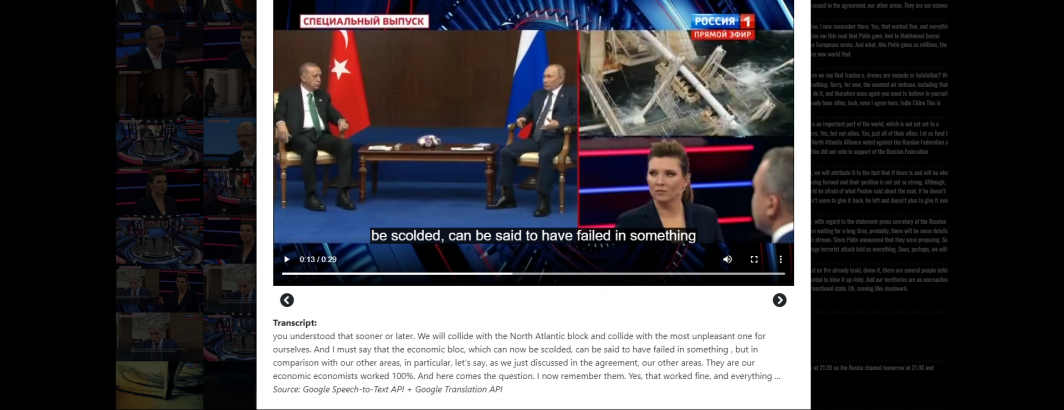
Order-mismatched languages pose a number of complications to translation alignment. One area of especial concern surrounds negation. Some languages place negation modifiers directly in front of the verbs they negate, while other languages may place them in different locations.
Take, for example, this Russian language SRT excerpt:
13 00:01:06,500 --> 00:01:09,100 французский президент макрон заявил, что 14 00:01:09,100 --> 00:01:12,600 отвечать на ядерный удар по Украине Франция 15 00:01:12,600 --> 00:01:15,800 не станет. А лично он против мировой войны,
Translating this line-by-line using the traditionally recommended SRT workflow yields:
13 00:01:06,500 --> 00:01: 09.100 French President Macron said that 14 00:01:09,100 --> 00:01:12,600 respond to nuclear strike on Ukraine France 15 00:01:12,600 --> 00:01:15,800 won't. And personally he is against the world war,
While this captures that France will not respond to a nuclear strike on Ukraine, it takes a fair bit of mental gymnastics to parse what it is saying. Worse, the "won't" does not appear until a subsequent captioning line and is buried alongside a second argument that takes over that line, meaning a casual reader may miss the negation, while the disfluency makes it extremely difficult to understand precisely what the sentence says.
Look closely at the original Russian and you will see that it has two parts. The first is "французский президент макрон заявил, что отвечать на ядерный удар по Украине," which is "French President Macron said he would respond to a nuclear strike on Ukraine." The sentence states in the affirmative that France would respond to a nuclear strike. It is the last three words, "Франция не станет" ("France won't") that provide the negation. When put together, the sentence "французский президент макрон заявил, что отвечать на ядерный удар по Украине Франция не станет." becomes "French President Macron said that France would not respond to a nuclear strike on Ukraine."
In English, the negation appears before the verb, while in the original Russian sentence, the negation appears at the end of the sentence. This poses a substantial reordering challenge when attempting to reconstruct the translation back into the timecode space of the original.
There are two possibilities for a translation model to reorder this sentence. In the first, the model could choose to move the negation "won't" from line 15 up to the verb "respond" in line 14 (verb-centric reordering). Alternatively, the model could move the entire sentence core down to the negation (moving almost all of line 14 down to 15 in a negation-centric reordering).
The results below show how Google Translate restructured the sentence, choosing negation-centric reordering:
13 00:01:06,000 --> 00:01:09,000 French President Macron said that 14 00:01:09,000 --> 00:01:12,000 France 15 00:01:12,000 --> 00:01:15,000 will not respond to a nuclear strike on Ukraine. And personally, he is against the world war,
This approach temporally imbalances the resulting translation, resulting in extremely short and extremely long sentences, whereas verb-centric reordering would yield better alignment.
Post-processing reordering could partially redistribute the translation temporally, but length-based reordering may cause words to appear before they are spoken, while semantic reordering requires additional knowledge of the specific reordering strategy selected by the model in each case, which in turn requires knowledge of both the source and target language structure.
Future work will be required to further refine these results, but while the temporal imbalance affects display, the resulting translations achieve the maximal quality and accuracy possible under the translation model.